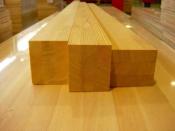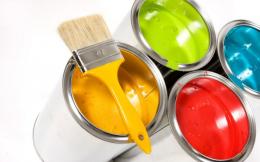Search
Login
Recommended
How to choose the right paint for concrete and plastered surfaces
Properly selected paints turn dull gloomy, gray walls into a painting.
Content
- General information
- How paints differ
- Facade paints video video
- Base paints video
- Paints for cement and sand tiles and slate
- Painting of unheated rooms
- Concrete floor painting
- Paint selection for walls and ceilings
- Hit parade of colors
General information
Concrete and plastered with cement-sand mortar surfaces are weakly absorbing mineral substrates. Such surfaces must be coated with varnish-and-paint materials with good hiding power, i.e. in one or two passes it is necessary to paint over the dark gray base.
Concrete and cement are the main bases for the finish, although they differ from each other.
Rough cement plaster is able to hold paint layers, and concrete has a smooth texture and it needs to improve adhesion, i.e. improve adhesion to the finish layer.
It is important to understand that the quality of the painting directly depends on the preparation of the substrate and on the choice of finishing material.
How paints differ
Paints and varnishes for such substrates are subdivided into waterborne, i.e. water based and organically soluble, i.e. based on organic solvents.
Another important hallmark of paints and varnishes is the type of film former.
For concrete painting, when it comes to water-borne compositions, mainly water dispersions and emulsions of synthetic resins are used, such as: acrylic, acrylate, silicone, latex and others.
Organic solvent based materials contain alkyd and polyurethane compounds.
For concrete surfaces subject to wear, special epoxy paints are available, one and two-component, such as: Tikkurila Betolux urethane-alkyd floor paint.
High-strength floor coverings and polymeric bulk floors can be distinguished into a special category, thin-layer coatings are also used in the decoration of vertical surfaces.
Facade paints
For facade decoration from concrete and plastered materials, mainly waterborne acrylic and silicone facade paints.
Often, apply siloxane, or modified with siloxane and silicone acrylic compounds.
I would like to highlight the high-quality paints presented on the Russian market by the international concern Akzo Nobel, such as Dulux (smooth facade); from Tikkurila (Finland) Kivisil, Yki; from Somefor (France) Facade Acryl; facade paint (Russia, VGT Enterprise). Such high-quality materials form a weather-resistant water-dirt-repellent decorative coating.
Many paints are vapor-permeable, they do not interfere with the air exchange in the structure, but for this, the rough finish must be made of vapor-permeable plaster, and the main wall is made of clay brick or aerated concrete, foam concrete blocks. Facade paints have the ability to not allow carbon dioxide to pass through, this, in turn, reduces the risk of efflorescence (ugly whitish streaks in the form of salt deposits).
It should be remembered that before painting a cement or concrete base, it is necessary to carry out a primer. It is better to use proprietary primer of the same manufacturer as the paint material.
You can make the primer yourself, for this you need to dilute the paint or enamel in a certain proportion, most often - one part of the diluent to 10 parts of the paint.
Professionals advise applying paints for concrete and cement surfaces with a roller, brush or spray gun.
In this case, it is better to use brushes or rollers with synthetic bristles or bristles, as natural hairs can swell from water and leave grooves on the painted surface.
Base paints
Before choosing a facade paint for a base, carefully read the annotation on the package, if the base is not indicated on it, then it is better not to use this paint.
The basement of the facade is a zone of increased aggressiveness of the environment, as mud splashes that contain various chemical compounds get here.
To make the house look elegant and tidy, a neat owner often washes the basement, including with the use of brushes and other cleaning products. Conclusion - for painting the basement strip, paints of increased reliability are required.
We advise you to pay attention to paints and varnishes from Akzo Nobel Marshall Maestro; Alpa Facade by Somefor et al.
Paints for cement and sand tiles and slate
Since cement-sand tiles are more affordable than clay tiles, naturally, today this tile is in the lead. However, during operation, under the influence of atmospheric phenomena, the roof may tarnish. In order to refresh the color, thereby providing additional protection for the material, you must use special acrylic paint.
For such purposes, you can use Disboroof 408 Dachfarbe (Caparol, Germany) - it is a weather-resistant acrylic composition in organic solvents.
Slate also needs coloring. For such purposes, CorkS products are used for slate and tile paint (manufactured by Russia, Cork-S), Shikril (KrasKo, Russia), Slate - Color (NPP GC, Russia), they make slate more aesthetic, protect against weathering, do not allow moss and lichen to grow.
Painting of unheated rooms
Finishing technical and auxiliary rooms, such as boiler rooms, garages, unheated rooms such as loggias and verandas, often confuse the owners. What materials to apply?
Walls and floors, in such conditions, need unpretentious durable coatings, but also aesthetically, these rooms should look decent. Special wear-resistant paints based on polyurethane or epoxy-based come to the rescue (Betolux, Winner, Akyacoat - from Tikkurila; AlpaFacade from Somefor; Enamel for concrete floors from Novbytkhim, Russia, etc.).
All of the above decorative coatings tolerate large temperature differences, are resistant to household chemicals and intense mechanical stress. Wear-resistant paints are copied according to the same color cards as facade materials.
Concrete floor painting
Special epoxy-based polymer products (polymer bulk floors) provide reliable protection for concrete floors. Such coatings are durable, flexible, immune to mechanical stress, wear-resistant, resistant to chemical aggression, eco and electrical safe, hygienic and easy to care for.
At the same time, thanks to the rich color scheme, various fillers, they are able to turn dreams into reality. When pouring floors, you can perform a visual separation of different functional areas.
Depending on the operating conditions, polymer coatings are a multilayer structure, they include impregnating, sealing, leveling and other products.
Paint selection for walls and ceilings
Nowadays, it is possible to paint walls, ceilings or floors in almost any color. In places where paints and varnishes are sold, special machines are installed for tinting paints and varnishes. In banks with a basic composition, a hole is made, a colorant is mixed through it. For example, ALPA paints can be tinted from 5000 shades. Automated tinting is done according to the prescription in the machine.
Hit parade of colors
REMMERS BETONACRYL
It is an elastic paint for facades based on pure acrylate. They are used for painting old and new concrete surfaces, plaster and bases on cement and lime-cement binder, as well as fiber cement boards. Water repellent, vapor permeable, weatherproof and hiding. Inter-layer drying - at least 8 hours. Flow rate 150-200 ml \\ square meter.
ALPA FACADE ACRYL
Weatherproof exterior acrylic paint. It is applied to concrete, cement, brick, gypsum, drywall, stone, wood, etc. It has high weather and moisture resistance. Thanks to special components, it does not lose color brightness for more than 7 years. Drying time - 1 hour. Consumption 1 liter per 8 square meters.
CAPAROL AMPHISILAN - PLUS
Facade matt paint based on Selixan resins. It is used for painting plastered surfaces and mineral substrates. It can be used as a repair layer on firmly held coatings. Drying time - 12 hours. Flow rate 150 ml \\ per square meter.
ALPA ALPAFACADE
All-weather paint. For all types of facade surfaces. It is steady against temperature difference from -50 to +50 degrees Celsius. It can be painted at high humidity and temperature up to -15 degrees, as well as on fresh cement. It can be applied without preliminary primer. Drying time - 3 hours. Consumption 1 liter per 8 square meters.
TIKKURILA AQUACOUT LACQUA
Epoxy paint. It is used for painting new and old concrete floors, cement plaster, brick and mineral slabs. Consumption 1 liter per 7-10 square meters.
DULUX INNETAK
Deep matt water dispersion paint for interior use. You can paint the ceilings in rooms with moderate humidity, brick, plaster, drywall, wallpaper for painting, etc. Repeated application after 2 hours, complete drying after 4 hours. Consumption 1 liter per 7 square meters.
TIKKURILA NOVOPOX LP
Epoxy coating. It is used for finishing old and new concrete floors, floors of balconies. Consumption of about 1 liter per 3 square meters with a layer thickness of 0.3 mm.





